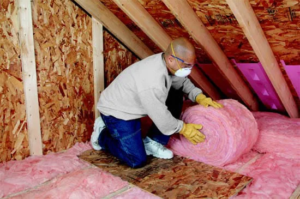Dental SEO is a marketing strategy that helps your practice rank higher in search engine results pages (SERPs) for patients searching for dentists near you. The process involves a variety of techniques, including refining website content, selecting relevant keywords, and enhancing local listings. Contact Lead Hounds now!
Creating compelling, informative content is crucial to the success of your dental SEO campaign. It helps build trust and credibility with potential patients, and it also increases your ranking in search engines.

Using the right keywords in your dental marketing can help you attract patients online and grow your business. You should focus on selecting keywords that match your target audience’s buyer journey stage. This will allow you to create content that is more relevant to potential patients and improve your chances of ranking high on search engine results pages.
A great way to find the right keywords for your dental marketing is to use a keyword research tool like Google AdWords or Bing Keyword Tool. Then, you should incorporate these keywords into your website content. Keep in mind that keywords should be used naturally, and don’t overuse them. You should also monitor your keywords regularly and make adjustments as needed to ensure that they are working well.
For example, if you are a dentist who offers tooth whitening services, you can target the keywords “tooth whitening” and “dental whitening.” These keywords have high search volumes and are likely to generate a lot of traffic. However, you should be aware of the competition for these keywords and be prepared to pay a high cost-per-click (CPC) to rank for them.
Another important dental SEO strategy is to optimize your site for location-based keywords. People tend to search for dental services in their local area, so targeting location-specific keywords can increase your visibility on search engines. You should include these keywords in your website content, meta tags, and local directory listings. Also, try to incorporate these keywords into your service pages and blog posts. This will help you rank higher in search engine results pages and attract more patients to your practice.
Content
Dental SEO is a crucial part of any dental practice’s digital marketing strategy. It can help improve search engine rankings and boost visibility, ultimately resulting in more phone calls and patients. However, dental SEO is not a quick fix and can take several months to see results. This is why it is important to work with an experienced SEO agency.
One of the most effective dental SEO techniques is to optimize the content of your website. This includes incorporating keywords in your title tags, meta descriptions, and page content. It is also important to include relevant keywords in your URL and image file names. For example, if your service page is for “dental implants”, the image file name should be something like “dental-implants-in-your-city”.
Another way to improve your dental seo is by creating unique and informative content. This can be done by writing blog posts that incorporate your target keywords and providing valuable information to your audience. Research shows that consumers feel more positive about a brand after reading custom content. It is also important to create social media posts that incorporate your keywords. This can be done by sharing useful and informative articles or by posting pictures of your happy patients.
The final component of a dental SEO strategy is to ensure that your website is easy to navigate and mobile-friendly. It is important to have a clean layout and consistent navigation. In addition, you should make sure that your contact information is clearly displayed on each page of your website. This will help your patients find your office quickly and easily.
Backlinks
Backlinks are an essential component of dental SEO, as they help to improve the site’s visibility in organic search engine results pages (SERPs). In addition, quality backlinks can also boost the website’s credibility and patient trust. However, the process of building and acquiring high-quality backlinks is time-consuming and difficult. Therefore, it’s best to seek professional assistance from a reputable and experienced dental SEO agency.
Local citations are a key aspect of dental SEO, as they provide a link to your website and increase its authority. These citations can be found on local online directories, Google My Business listings, Yelp, and other social media sites. They should contain accurate information about your practice, including its name, address, hours, and phone number. You should check and update these citations regularly.
Aside from optimizing local citations, you can also use guest blogging to create links to your website. This is an effective way to drive traffic and build your brand, as it will attract the attention of potential patients. However, you should remember that it is important to choose relevant and high-quality blogs.
Another great way to build backlinks is to sponsor charity events or community initiatives with local organizations. For example, you can host a free 5k run or food drive with a local nonprofit and include your dentist’s logo on the event’s marketing materials. Additionally, you can partner with local schools to host PTA events and encourage parents to leave reviews about your practice on Google or Yelp. These reviews will boost your search engine rankings and attract more patients.
Google Business Profile
A Google Business Profile, formerly known as Google My Business, is an important part of dental seo. It provides dentists with a free tool to manage their online reputation and attract new patients. It is also a critical component of local SEO. Optimizing your profile, adding service areas & scheduling links, and crafting keyword rich descriptions with premium images/videos can help you boost your local search visibility.
A well-optimized Google Business Profile can make the difference between attracting a new patient and turning them away. This is because patients who see outdated or irrelevant information are more likely to abandon their search. In addition, regular updates to your listing can improve your ranking.
Dental practices can create two types of Google Business profiles: a practice profile and practitioner listings. A practice profile includes the name of your dental office and a summary of services offered. You can also add a website link and social media links to your profile. You can even enable messaging, which allows you to communicate directly with patients who find your profile on Google Maps or search for your practice in the mobile app.
To optimize your Google Business Profile, ensure that you have accurate and consistent NAP (name, address, phone number) data across all profiles where this information is listed. This includes your website, email templates, and Yelp. If you don’t have NAP consistency, Google will penalize your listing in search results.
You can optimize your Google Business Posts by highlighting the unique features of your dental practice, such as your services and amenities. You can also share important news and events to increase brand awareness. For example, if you’re launching a new procedure, you can create a Business Post that highlights the benefits of the treatment. You can also highlight the expertise of your team by featuring photos and videos of satisfied patients.
Local Listings
For dental clinics, local listings are a great way to rank higher in search engines and get more patients. This can help them stand out from competitors, and improve their chances of landing in Google’s 3-Pack. However, implementing a strong local SEO strategy for dentists requires careful planning and knowledge of best practices. For example, dentists should ensure that their NAP (name, address, and phone number) is consistent across their local listing sites. They should also encourage their customers to leave reviews.
Another important factor is to ensure that the content on their website aligns with keywords. This includes the homepage, service pages, and content articles. They should also include a unique title tag and meta description. In addition, they should optimize their Google Business Profile and build citations. In terms of link building, it is important to focus on links from high-quality, niche websites. These are the most relevant to their audience and will have a greater impact on their search engine ranking.
Lastly, dental SEO experts should do competitive analysis to understand their competitors’ online strategies. This can be done using tools like Local Falcon, which compares a dental practice’s local rankings with that of their competitors. By analyzing competitor data, marketers can identify opportunities to differentiate their client’s services and find the right keywords to target.
In addition, a successful dental marketing strategy requires an effective Google Business profile that is optimized with the right keywords and information. It is also important to keep up with the latest Google guidelines and SEO best practices. For example, Google now considers the quality of a website’s backlinks in its rankings. For this reason, it is critical to have a well-rounded strategy that combines keyword research, optimizing a website, creating content with relevant local topics, and building citations.







